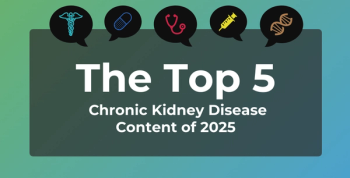
Dr Jonathan Silverberg Explains the Steady Increase in Atopic Dermatitis Among Children
As the population continues to diversify, the United States may be headed for increases in atopic dermatitis disease burden among children, said Jonathan Silverberg, MD, PhD, MPH.
Jonathan Silverberg, MD, PhD, MPH, is an associate professor of dermatology at George Washington University School of Medicine and Health Sciences.
Transcript:
What did your study reveal about atopic dermatitis prevalence among children in the United States and how has it changed over time?
Silverberg: Overall, what we found was that, even in the more recent years because this study focused in on the time span between 1997 and 2018, the prevalence of childhood atopic dermatitis steadily increased from 2000, where it was as low as 7% in children, up to 2011, where it was about 12.8%, and remain pretty consistent all the way through to 2018. There's some questions about 2013, when it started to plateau a little bit, but then, it came right back up. If anything, it looks like it's not falling off over time. That has implications. This is not unlike asthma, where some of the prevalences have decreased over time, which is quite fascinating. This is a disease that, commonality-wise, has stuck around, unfortunately, in the pediatric population.
What we did see was that there were some differences in the sociodemographics of the population that accounted for some of those increases. We often think about environmental factors but it's not just environmental factors. [There is a] growing diversification of the population. Previous studies that have shown that African American children have a prevalence of atopic dermatitis double that of their Caucasian counterparts. With a growing diversification of the population that may actually introduce even more population disease burden. Of course, this is a very important issue, from a resource allocation [standpoint], for making sure that we are providing appropriate care and access to care for all of our patients, especially for our underrepresented minority patients. So, that's the landscape view of the findings with respect to the prevalence of atopic dermatitis.
How did sociodemographic features impact the odds of atopic dermatitis during childhood?
Silverberg: There's are a number of well-established associations or risk factors that have come up over the years in terms of research and that is always looked at at a cross-sectional level— what the associations are. This is fairly novel in the sense that understanding how the shifting demographics may alter the population affects our population prevalence. We've seen a few things. One is, in terms of Black race, African American/Black children having an increasing representation within the pediatric population in the United States was a major contributing factor. We also saw this, almost paradoxically, with households with the highest levels of education. It's a fascinating finding that has been seen in other studies. With improved education, increased access, and more pervasive higher education throughout the United States, for whatever reasons, higher education seems to be associated with atopic dermatitis. That also was a contributing factor. We also see some interesting observations with respect to insurance status, as well. So, recognizing that access to care may be an important factor, on the one hand, for patients who are insured, there may be a potential for detection bias. On the other hand, when we think about disease persistence and severity, patients with Medicaid and those who are uninsured may actually have greater disease persistence, which puts them at even higher risk for increased prevalence.
Newsletter
Stay ahead of policy, cost, and value—subscribe to AJMC for expert insights at the intersection of clinical care and health economics.









































